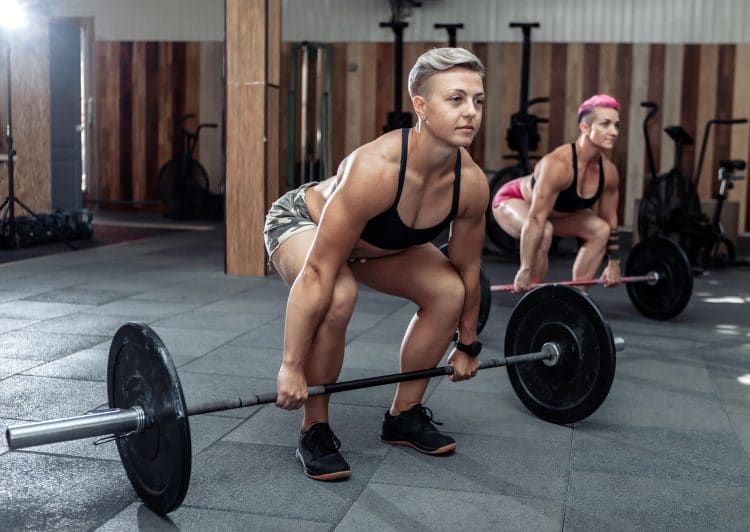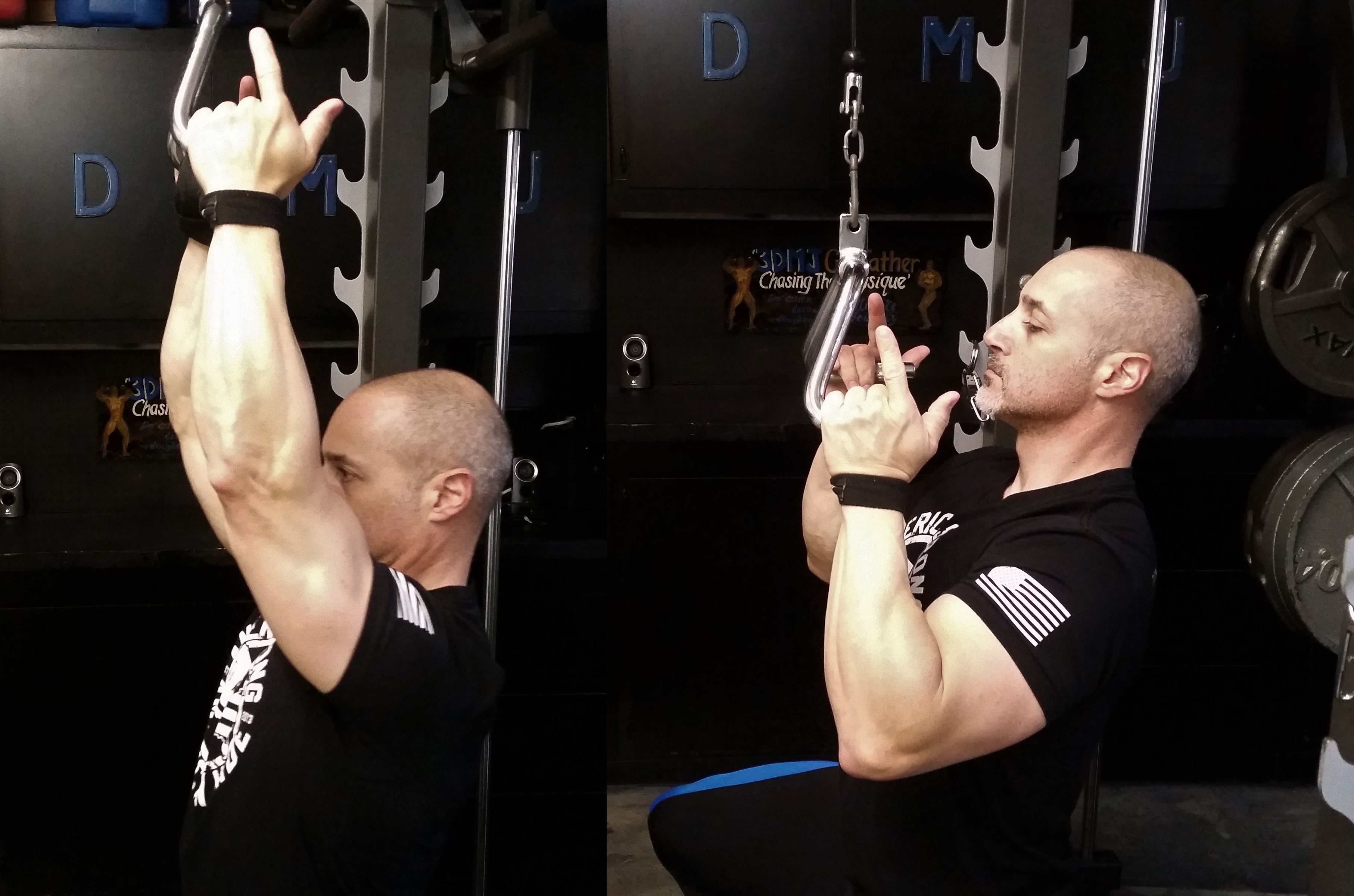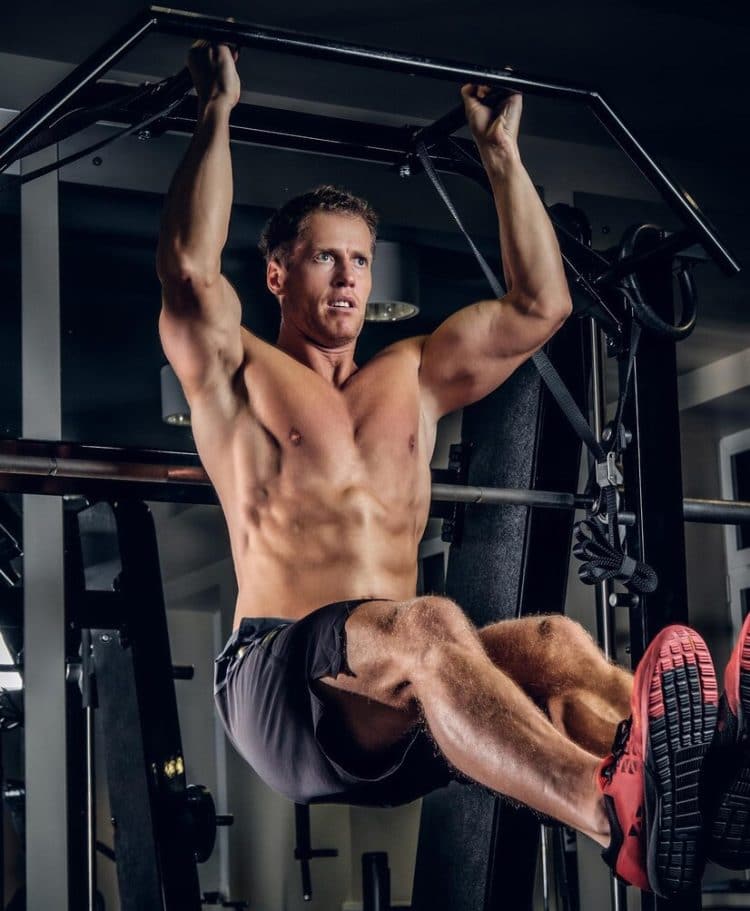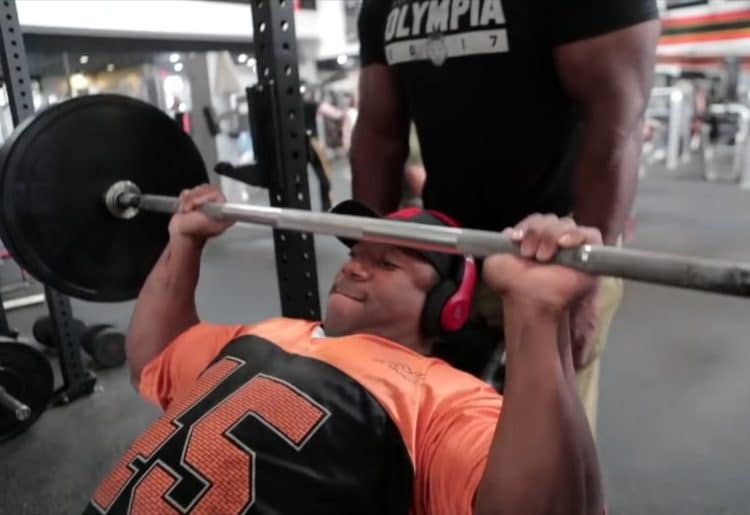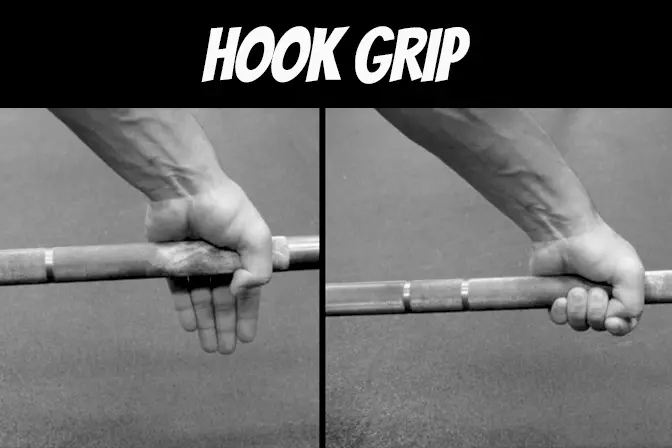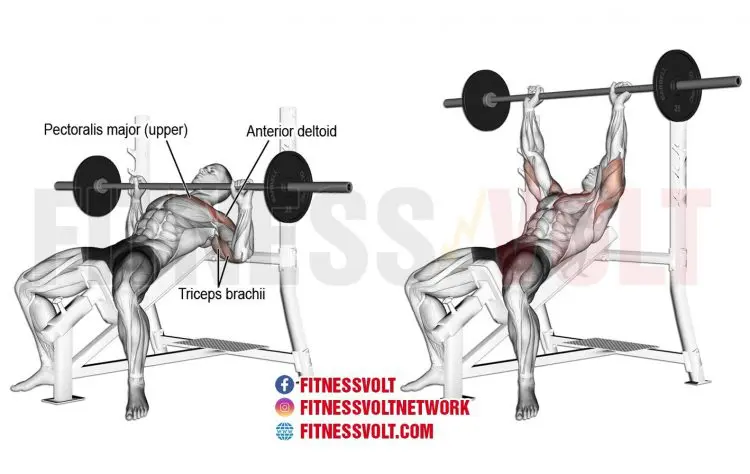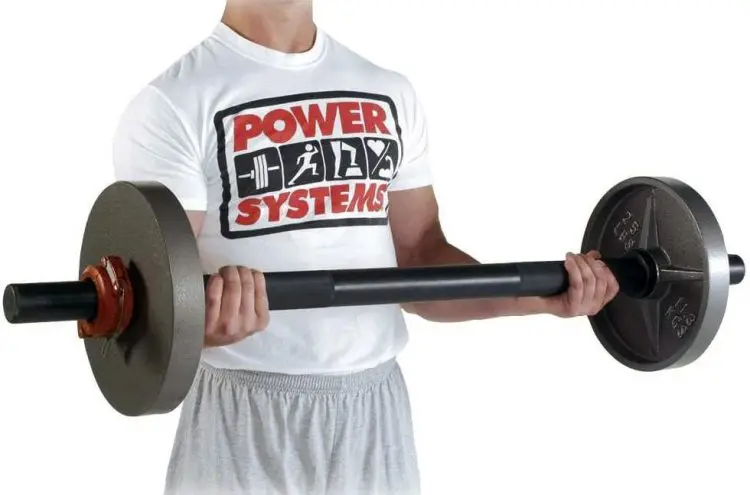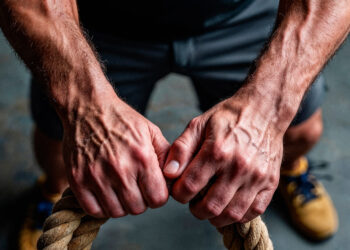How much attention do you pay to your grip during your workouts? If, like most lifters, you just grab on to the knurled part of the bar and start repping, you could be inadvertently undermining your progress.
While how and where you place your hands won’t have a huge impact on the muscles you are working, a small tweak here or a minor adjustment there could make your training just a little more effective.
Grip Tips to Build Muscle Faster
Here are eight tried and tested grip hacks for more productive workouts.
1. Do double overhand deadlifts for better lat engagement
The deadlift is an awesome exercise for building a bigger back and more muscular glutes and hamstrings. It’s also one of the best ways to develop and test your strength. That’s why it’s one of the big three powerlifts.
A lot of lifters automatically adopt a mixed grip for deadlifts, but that could be a mistake.
Level Up Your Fitness: Join our 💪 strong community in Fitness Volt Newsletter. Get daily inspiration, expert-backed workouts, nutrition tips, the latest in strength sports, and the support you need to reach your goals. Subscribe for free!
While a mixed grip (one hand forward, one hand backward) stops the bar from rolling out of your fingers so you can lift more weight or do more reps, it can also cause muscle imbalances.
Sure, you COULD avoid this problem by switching hands set by set, but the chances are that placing your hands the other way around just feels unnatural, so you won’t do it. Instead, you’ll probably adopt the exact same grip every time you deadlift.
The biceps on the supinated side is also put under tremendous pressure, which could lead to severe injury. This is an acceptable risk in powerlifting, but it’s an unnecessary danger for bodybuilders and anyone training for general strength and fitness.
So, instead of using a mixed grip for deadlifts, make the switch to the double overhand grip.
Doing so will ensure you train both sides of your body equally, eliminating potential imbalances. And while you may not be able to lift as much weight, you should find that you can feel your lats more as you work to press the bar back against your legs.
If your grip fails sooner than you’d like, feel free to make like a strongman and use lifting straps, or take it as a sign you need to start strengthening your hands and forearms.
2. Use a pistol grip for more productive back exercises
You won’t see many people using a pistol grip. That’s because it’s so darn hard! With the pistol grip, you hold the bar/handle as usual but then extend your first finger, so it’s pointing away from you.
When you use the pistol grip, you are forced to use less weight and do your reps much more slowly than usual. If you don’t, the bar will probably slip from your grasp. This helps keep the tension on the target muscles, so you feel them working more. This reinforces the mind-muscle connection, which is crucial for muscle growth and strength.
Good exercises to use the pistol grip with include:
You don’t have to use the pistol grip for every set of your workout. Instead, just use it during your warm-up sets to help awaken your muscle-mind connection. Adopt your regular grip after that, and you should feel your lats working much more.
3. Do offset grip dumbbell curls for a better biceps workout
The biceps brachii has two main functions. First, they flex your elbows and, secondly, they supinate (rotate) your forearms. This means they turn your palms upward. Every biceps exercise involves elbow flexion, but only dumbbell curls involve active supination of the forearm.
However, even with dumbbell curls, the resistance to supination is minimal because most people hold the center of the dumbbell handle.
You can make your biceps curls more effective by using an offset grip. This means your biceps will have to work a little harder to rotate the weights.
So, the next time you do biceps curls, hold your dumbbells with your thumbs pressed up against the inside of the weight plates. Then, rotate the dumbbells as you curl the weights up toward your shoulders.
You’ll need to work a little harder to turn your wrists which will produce a more intense biceps contraction at the top of each rep.
4. Use a neutral grip for better pull-ups and pulldowns
While an overhand grip works well for both pull-ups and pulldowns, you may well find that a parallel or neutral grip works better.
A neutral grip puts your biceps in arguably their strongest, most fatigue-resistant position, so you can do more reps with a heavier weight. This will make your back workouts more productive.
In addition, using a neutral grip makes it easier to keep your shoulders pulled down and back, which increases lat engagement for a more effective workout.
Finally, the overhand grip places your arms in a pronated or internally rotated position, putting a lot of stress on the shoulder joints. A neutral grip is often more joint-friendly as it involves less rotation. Shoulder pain is a problem that many lifters contend with, and anything that reduces joint stress is worth trying.
So, better muscle engagement, more reps and weight, and less shoulder stress…sounds like it’s time to make the switch to neutral grip pull-ups and pulldowns!
5. Try suicide grip presses for less shoulder pain
Also known as a false grip or thumbless grip, the suicide grip is somewhat controversial. While some people are deadset against using it, others think it’s the best grip for bench and overhead presses, including the one and only Arnold Schwarzenegger.
When you adopt the suicide grip, the bar sits comfortably on the heel of your hand, directly over your wrist bones. This makes it a lot easier to maintain a neutral wrist position. Keeping your wrists straight is much more challenging when you’ve got a full grip on the bar, which is why some lifters resort to using wrist wraps for extra support.
Level Up Your Fitness: Join our 💪 strong community in Fitness Volt Newsletter. Get daily inspiration, expert-backed workouts, nutrition tips, the latest in strength sports, and the support you need to reach your goals. Subscribe for free!
As well as being easier on your wrists, the suicide grip may be better for your elbows and shoulders, too. For example, using a suicide grip makes it easier to keep your upper arms tucked in toward your ribs, which takes stress off your shoulders and elbows during bench and overhead presses.
Needless to say, there IS a risk of the bar slipping when you use the suicide grip. After all, it’s called the suicide grip for a reason! So, master the suicide grip with light weights before progressing to heavier loads and make sure your hands are dry to minimize the risk of injuries. Apply some chalk to your hands and the bar, and make sure you have an attentive spotter nearby to help you if you get into trouble.
6. Forgotten your lifting straps? Try the hook grip
A weak grip can have a significant impact on your workouts. If your grip fails, you won’t be able to do as many reps, which could undermine your progress. That’s why some lifters rely on lifting straps, so their hands are less likely to fail before the muscles they’re training.
But what if you forget your lifting straps? Does that mean you’re doomed to a lousy workout?
Not necessarily. You can use a hook grip instead!
With this method, you hold the bar as usual but then tuck your thumb under your fingers. This increases friction, which helps prevent the bar from slipping out of your hands.
While the hook grip is an excellent way to strengthen your grip, it can also be painful and takes a lot of getting used to. Olympic weightlifters and CrossFitters often wrap athletic tape around their thumbs to make the hook grip more tolerable.
You can use the hook grip with any pulling exercise, including the snatch, clean, deadlift, row, pulldown, and pull-up.
Related: Hook Grip Deadlifts – Benefits, How-To, Tips, And Variations
7. Experiment with different grip widths for pulldowns and bench presses
Reading a lot of exercise guidelines, it sounds like all lifters should use the same grip on every exercise, typically with their hands about shoulder-width apart. But, moving your hands in or out can have a significant impact on the exercise you are doing, potentially making it more effective.
As a general rule, on pressing and pulling exercises, the closer your hands are, the more work your triceps or biceps have to do. But, if you move your hands outward, your chest, deltoids, or lats have to work harder.
So, experiment with your hand position to see if you feel your chosen exercise more in the muscles you’re trying to target.
That doesn’t mean you need to adopt an ultra-wide grip for bench presses, lat pulldowns, etc., as doing so may put more stress on your joints than is necessary. But, do try moving your hands out (or in) by a few inches to see if you feel those target muscles working any differently.
8. Go fat or go home!
Of course, we’re not talking about your waistline here but your grip!
Most standard barbells and dumbbells are one inch in diameter, making them fairly easy to hold. In contrast, thick or fat bars are usually two inches or more in diameter, making them far harder to grip.
The benefits of fat bar training include:
Stronger grip and bigger forearms
If you want a cast-iron grip, training with a thick bar will give you what you want. Fat grip training turns every exercise into a grip builder. You’ll have to work much harder to maintain your grip on a thick barbell or dumbbells, and your hands will get stronger. In addition, all that extra grip training will increase forearm size, too.
Increased muscle activation
While using fat grips may mean you have to use lighter weights initially, training with a thick barbell or dumbbells has been shown to increase muscle activation (1).
This is due to a phenomenon called irradiation. In simple terms, the harder you grip, the more muscle fibers your body activates. Not just in your hands and forearms but throughout your body.
Increased joint stability
With a less secure grip on your barbell or dumbbells, you will have to work harder to balance, control, and support the weight. This increases stabilizer muscle activity.
Stabilizers are usually small muscles, such as the rotator cuff, that help prevent unwanted movement. Stronger stabilizers and better joint stability can increase exercise and sports performance while reducing your risk of injury.
Fewer aches and pains
Using thicker barbells and dumbbells can help alleviate elbow pain. It takes stress off your tendons and could help prevent things like repetitive strain injuries, biceps tendonitis, and carpal tunnel syndrome.
Variety
Your progress will soon stall if you do the same exercises over and over again. Fat grip training means you have another way to vary your workouts and keep you clear of training ruts and plateaus.
Grip Tips to Build Muscle Faster
Don’t just grab your barbell without thinking about your grip. Choosing the correct or a different hand position can have a noticeable effect on your workout.
Use these grip tips to get more from your training. In some cases, changing your grip will mean you can lift more weight or do more reps, while in others, it could allow you to really feel the target muscles working. Some grips are simply easier on your joints.
So, don’t take your grip for granted. Instead, position your hands with a little more thought and purpose and you might make your workouts more productive.
References:
1 – PubMed: Impact of Fat Grip Attachments on Muscular Strength and Neuromuscular Activation During Resistance Exercise https://pubmed.ncbi.nlm.nih.gov/30694963/

